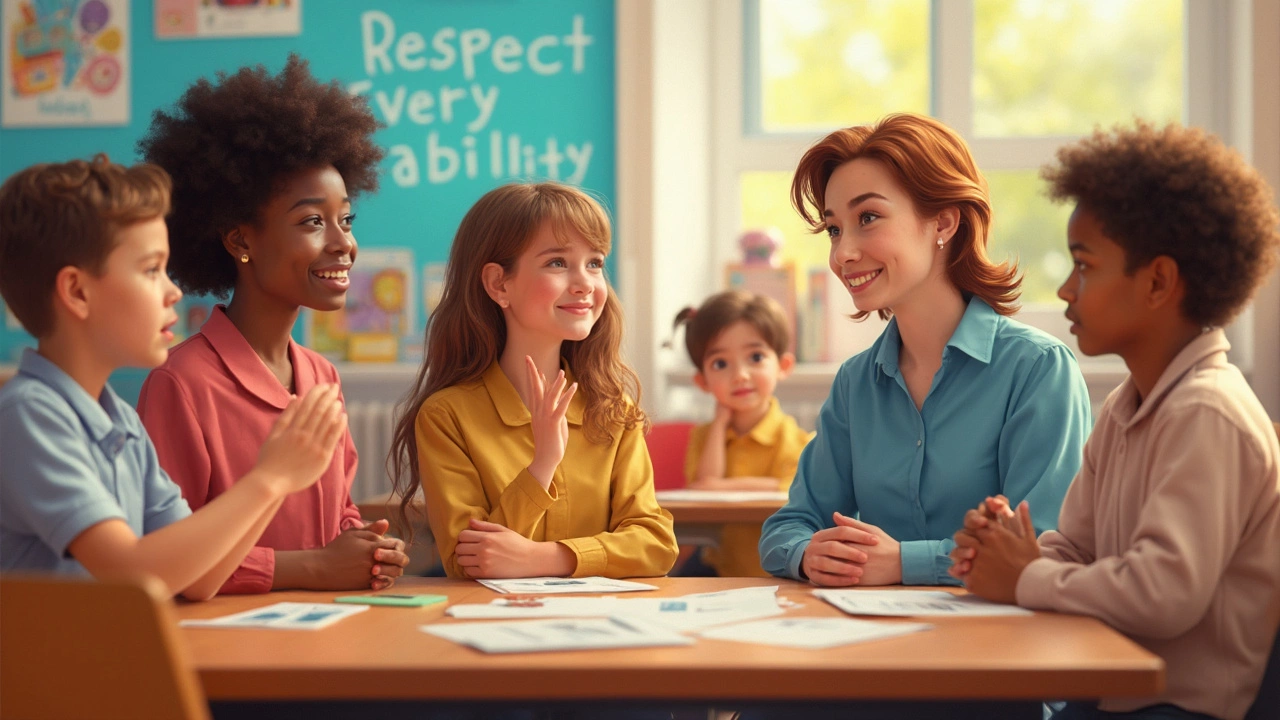Respectful Communication: What It Is and How to Use It Every Day
When you talk to someone, you want them to feel heard and valued. That’s the core of respectful communication. It isn’t about fancy words or perfect grammar – it’s about listening, speaking kindly, and treating the other person like a partner, not an opponent. In homes, schools, or any group, this simple habit builds trust and reduces conflict.
Kids pick up habits fast, so showing respect in conversation sets the tone for lifelong social skills. A teacher who models calm, attentive listening encourages a classroom where every voice matters. Parents who pause before reacting teach their children that thoughts and feelings matter more than winning an argument.
How to Show Respect in Everyday Talk
Start with eye contact or a nod to signal you’re paying attention. Even a quick "I hear you" tells the speaker you’re engaged. Use the person’s name – it makes the interaction personal and shows you care. When you respond, keep it short and on point. Avoid interrupting; let the other finish before you add your thoughts.
If you disagree, phrase it as a perspective, not a judgment. Instead of saying, "You’re wrong," try, "I see it differently because…" That shift lowers defensiveness and opens space for real dialogue. Ask open‑ended questions like, "What made you think that?" or "How did that feel for you?" These prompts let the other person expand and feel understood.
Tools to Keep Conversations Positive
One easy tool is the "I‑statement" formula: "I feel ___ when ___ because ___." It focuses on your feelings rather than blame, which helps others hear your point without feeling attacked. Another trick is the "pause and repeat" technique – after someone speaks, repeat the main idea in your own words. This shows you listened and gives a chance to correct any misunderstanding.Body language matters too. Leaning slightly forward, uncrossing arms, and smiling when appropriate soften the tone. If a conversation gets heated, suggest a short break. A simple, "Let’s take a minute and come back," can prevent things from blowing up.
Remember, respectful communication isn’t a one‑time act; it’s a habit you build. Start with one interaction a day – maybe a morning greeting at school or a quick check‑in with a coworker. Notice how the response changes when you use these tiny tweaks. Over time, the habit becomes natural, and you’ll find fewer misunderstandings and more cooperation.
In a nursery or early‑learning setting, teachers who practice respectful communication help children feel safe to explore and ask questions. Kids learn that their opinions matter, which boosts confidence and curiosity. Parents can echo these practices at home, reinforcing the same values across environments.
Ultimately, respectful communication is a two‑way street. It requires both listening and speaking with care. By applying the simple steps above, you’ll create smoother, kinder conversations at work, school, and home. Give it a try today – you’ll be surprised how a small change can make a big difference.
Children with Special Needs: Is This Phrase Still OK to Use?
Is it still appropriate to say 'children with special needs'? This article breaks down what the term means, why some people avoid it, and what alternatives are being used in schools and communities today. Discover common pitfalls and real-life tips on talking about disabilities with respect. The language around special needs is changing every year—stay updated and inform your daily conversations. We’ll cut through the confusion and show you practical ways to communicate clearly and kindly.
